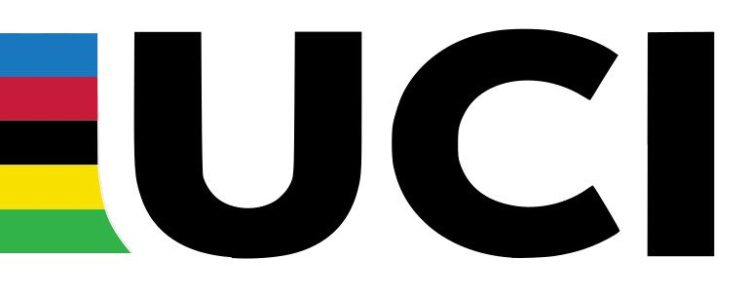Bike Fitting 101–How a Proper Bike Fit Can Prevent Injury and Optimize Comfort
By Christopher Schwenker
Bike fitting basics: Essential knowledge and strategies for eliminating discomfort, preventing injuries, and enhancing cycling enjoyment.
Whether you’re a beginner or an experienced cyclist, certain universal truths about bike positioning become apparent over time. The most crucial principle, distilled from the experiences of generations of riders who learned the hard way, underscores that an enjoyable and pain-free ride isn’t as simple as just hopping on the bike. That is why getting a proper bike fit from a knowledgeable professional is always a wise decision!
In this article, I have simplified and shared the insights from my conversation with Jason Hurst, a certified bike fitter.
What is a Bike Fit?
A bike fit typically involves adjusting components, such as saddle, stem, and handlebars, that can affect a rider’s position on the bike. This can be done to optimize parameters such as comfort, efficiency, performance, or aerodynamics.
In cases where adjustments are made to accommodate the results of injury, congenital or neural issues, or significant muscle imbalances, the process may be referred to as an adaptive bike fit.
Regardless of the bike fit’s nature, the process should focus on adjusting the bike to accommodate the rider and their cycling goals. It should not attempt to force the rider to adapt to a poorly fitting, e.g., inappropriately sized bike.
Is Bike Fitting Intuitive and Something We Can Do Ourselves, or is it Science-Based?
Ideally, the bike fitter will have sound human anatomy and biomechanics knowledge. Or will at least have completed some of the several excellent, comprehensive bike fitting courses currently available. This knowledge is essential in their assessment of your position and the issues that you are experiencing.
It will inform their choice and impact the order of adjustments as they seek to optimize your position. It can also enhance their ability to communicate with you and describe why they are making certain adjustments and the ideal outcomes of those adjustments.
However, there are excellent bike fitters who do not possess formal qualifications. Their skills and knowledge have been honed over many, many years and thousands of bike fits. The two most essential skills are observation and analysis.
There is no substitute for an objective and experienced set of eyeballs when performing a fit. Please don’t fall into the trap that snares many cyclists who think they can DIY it!
Why is a Certified Bike Fit Critical?
Self-assessing bike fit issues can be problematic. An issue may result in various symptoms, and conversely, a symptom may have a variety of causes.
You may not have sufficient knowledge to diagnose and remediate the issue yourself. You may not be objective in your assessment of the origin or severity of the problem. You may not have the tools or components required to make the necessary adjustments.
Perhaps the primary constraint, however, is that you can’t observe yourself from a third-person viewpoint to be able to see all parts of your body or your body as a whole. That’s why bike fitters exist.
What are the Basic Elements of Bike Fitting?
A good bike fit is a comprehensive service that assumes nothing and investigates everything relevant to your position on the bike. The fitter should complete an initial health screening, ask about your cycling history, injuries, and current and future goals, and perform functional movement assessments. They should then ask you to ride your bike “as is” while they observe your position and cycling mechanics.
Noting your reason for seeking a bike fit, they should work with you to find an optimal position, adjust or adapt the bike where necessary, and request your feedback as the fit progresses—possibly swapping out components such as the stem, for example, with one of a different length to alter the reach of the bike.
It’s important to make only one adjustment at a time to try and isolate cause and effect to the most significant degree possible. A bike fit may take between one and four hours, depending on the outcome of the initial interview and screening process and the bike fitter’s observations while you are on the bike.
Once the bike fit has concluded, you should receive a report summarizing what occurred and document all measurements of your new position.This step is vital for the fitter as it provides a historical reference should you revisit them.
It also lets you recreate your position should you need to disassemble your bike at any point. Additionally, it can provide you with an idealized starting point should you wish to purchase another bike or transition onto the turbo for indoor training.
What are Some Typical Bike Fitting and Positioning Mistakes?
The saddle is set too high, the cleats are positioned too far forward, the reach to the handlebar and controls is too far away, and the handlebars are too low or occasionally too high.
These are some of the more common and, to a trained eye, more easily identified issues. Remediation may require quick and simple adjustments or one or several new components
These mistakes can be caused by a cult-like adherence to cycling folklore, such as knee over the pedal spindle, wanting to look “pro,” or a blind reliance on joint angles, motion capture, and generic software analysis. All of this is done without due regard for a client’s specific needs and goals, their feedback during the fit, or a sound understanding of anatomy and biomechanics.
Flexibility, range of motion, past and current injuries, and chronic health conditions will also affect your ability to cope with a particular type of bike and the positional demands it places upon the rider. A responsible fitter will perform a basic health questionnaire and a functional assessment, providing valuable information to inform decisions made during your fit session.
How Can a Proper Bike Fit Help Prevent Injuries and Discomfort?
Discomfort isn’t a normal part of cycling and isn’t okay. Discomfort is your body’s way of telling you that something isn’t right. Ignoring it doesn’t make you a tougher cyclist, but it can certainly make you an injured cyclist. Overuse and compensatory injuries initiated by a poor position can ruin your ride or even keep you off the bike altogether.
Undertaking a bike fit can resolve discomfort and help prevent injuries by ensuring your body engages correctly with each of the three contact points on your bike: the pedals, saddle, and handlebar. For example, discomfort in your hands may result from the need to brace yourself more assertively on the handlebar if your pelvis is unstable on the saddle. Pelvic instability may result from poor proprioception at your feet, poor cleat position, or an unstable foot.
As a further example, the range of motion in hip, knee, or ankle joints may be insufficient to accommodate a rider’s current position. The result is one or several compensatory movements. These compensatory movements can place stresses on joints and muscles, resulting in pain and potentially overuse injuries as time progresses. Knee pain is a prime example of such an injury, and a good bike fit will identify the cause and provide solutions to remediate the issue.
Bike fitting and riding, in general, are individualized, and what works for your mate may not work for you. Trust in your bike fitting professional. Contact a physical therapist or health professional if the pain persists. It’s not okay.

So I Made the Investment in a Proper Bike Fit, Now What?
A good fitter should make an allowance for a follow-up appointment one to three months later. It may take a month or more of light to moderate-intensity cycling for your body to adapt to the adjustments. A follow-up appointment allows for the assessment of this adaptation and the making of further adjustments if required.
It is worth noting that bike fit is not a “one-and-done” process. Your body changes over time, whether due to illness, injury, or aging. This inevitably means that your optimal position on the bike will change over time. Indeed, at some point, you may find it necessary to purchase another bike in a different size or geometry to accommodate accumulated changes.
Don’t be blinded by the ‘science’ of goniometers, plumb lines, optimal angles, motion capture cameras, and supposedly intelligent software. They have their place in certain circumstances, but some of the world’s best bike fitters don’t use them. They rely on their knowledge and experience of the human body and cycling mechanics, as well as their acute observational and problem-solving skills, to great effect.
And remember, a proper bike fit by a knowledgeable professional is always a wise decision and an invaluable investment! Many have learned the hard way. Don’t make the same mistake.
About the Author
After over twenty years as director of his private physical therapy practice, Chris stepped away to pursue his passion for virtual cycling and writing. He founded TheZommunique.com, the leading source of independent cycling esports journalism, is a frequent contributor to Cycling Weekly, Cycling News, and road.cc, and co-hosts The Virtual Velo Podcast. He cycled 3,900 miles across the US in 2022 to support his virtual cycling non-profit, The DIRT Dad Fund.






















